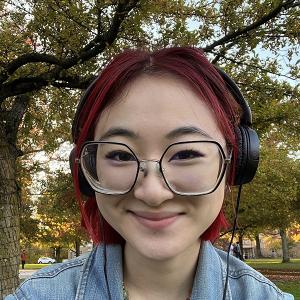If you're anything like me, you know deciding where to live can be a significant source of stress. Here at Oberlin, almost every student lives on campus all four years, which is great because it means we have *many* options to choose from. But it also means that we have a lot of decisions to make. By my count, there are currently 22 dorms (with #23 on the way!) and 3 coops you can live in on campus. That doesn't even include "village housing" which is owned by the college but geared towards upperclassmen looking for apartment-style living. There's a lot to choose from!
Between all the dorms, there are four main options for housing:
- Traditional Housing
- First-Year Residential Experience (FYRE)
- Language, Identity, and Theme Housing (LITE)
- Oberlin Student Cooperative Association (OSCA)
(Can you tell we're big on acronyms?)
Traditional housing is exactly what it sounds like: dorms ranging from 80 to 240 students, with almost every room type that exists—single, open double, divided double, triple, quad, etc—and students of all years. Most of these buildings have lounges and piano rooms, as well as kitchens and laundry spaces. Burton, Talcott, East, South, and North (legal name Langston) are all traditional dorms.
FYRE is geared specifically towards, well, first-years! The vast majority of first-year students live in FYRE housing, and it's generally considered a great way to meet people in your year. Barrows, Dascomb, Price, Kahn, and Fairchild are all first-year dorms. These dorms are very similar to traditional halls, but singles are much harder to come by. From what I understand, it's pretty difficult to get a single as a first-year unless you have an accomodation from the Office for Disability and Access (ODA). More on that later!
LITE is the largest housing type on campus, made up of 12ish different dorms. These buildings tend to be smaller, more tight-knit spaces, with fewer RAs and more community events. Here at Oberlin, we have language & culture houses for German, Russian, French, and Spanish. There are three heritage houses: Lord Saunders (Afrikan Heritage), J House (Hebrew Heritage), and Zeche (Latinx Heritage), as well as Asia House, two Women & Trans Collective dorms, and Barnard, which is a dorm for underrepresented students in STEM. Additionally, Noah and Burton have several theme halls, including Sci-Fi Hall, Quiet Halls, Substance-Free Hall, and First-Gen Hall. Kahn is also listed here under "Sustainability Hall" so don't get confused if you can't find it under the FYRE section of the application. As far as I know, most LITE dorms only offer singles and open doubles, but there are a few exceptions to that rule.
OSCA has its own housing process, which I don't know a ton about, but I do know that these communities offer a space where students live communally, completing a certain number of hours a week in order to contribute to the good of the group. Currently, Tank, Keep, and Hark each house approximately 50 students. Hark also hosts Third World Social Justice Coop, often shortened to TWSJ (and pronounced "twidge"). OSCA mainly offers doubles and singles, although Hark does have a suite-style apartment for accessibility needs, often called "the Harkment."
Which of these options is best for you is a decision that only you can make, but I hope that my descriptions have helped you understand the differences more clearly. Regardless of which option you choose, you will have to fill out the housing registration form via Starrez, so be sure to check your email regularly and pay attention to the different application deadlines. If you get assigned to LITE housing, you can choose whether to keep your placement or participate in the general housing lottery. I've never personally participated in the lottery, but my understanding is that you are randomly assigned a time slot based on class year, and then you get to go in and choose a room for you and your roommate(s) during that time.
If you have a documented disability (or other diagnosis that impacts your access to traditional dorm living) you can apply for an accommodation through ODA. For example, I have a permanent accommodation for a single room, but you can also get accommodations for a private kitchen or bathroom, depending on your needs. I speak from experience when I say this process can be a bit tedious, but it's totally worth it in my opinion. People are often really surprised when I tell them that I have a single as a first-year, and I've found that it's a helpful way to introduce the conversation about my accessibility needs when meeting new people.
One important thing to note about housing accommodations is that you still go through the regular housing application like everyone else. Then, if your placement does not fulfill your accomodation, ODA will reach out after the general lottery with another option and you can choose between the two.
Best of luck! Wherever you end up, I hope you make it feel like home. And, in case you were wondering, I will be living in La Casa next year. I can't wait!


